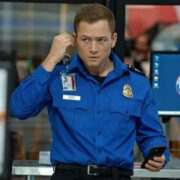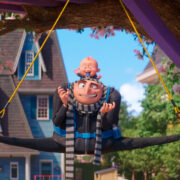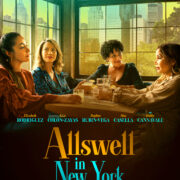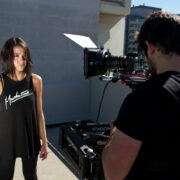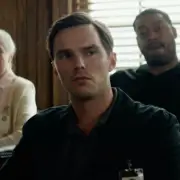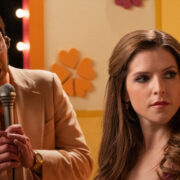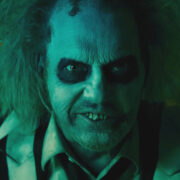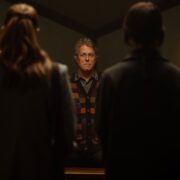ALICE THROUGH THE LOOKING GLASS: The One Disney Didn’t Need
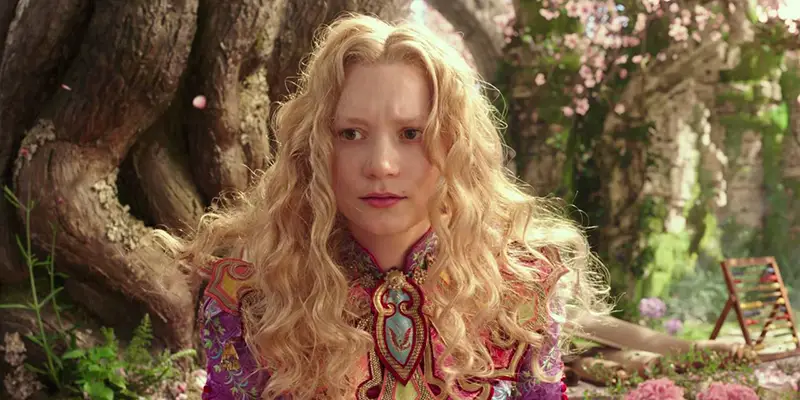
Alex is a 28 year-old West Australian who has a…
2016 has become the year where audiences are openly questioning the onslaught of mainstream movies coming out, especially when it comes to unnecessary sequels. Some of the films this year that have made us think ‘did this really need a sequel?’ include Now You See Me 2, The Hunstman, My Big Fat Greek Wedding 2, Independence Day 2, Zoolander 2 and even an Ice Age film set in space. We mustn’t kid ourselves, though, we all know why this is happening.
To put it plainly, the economy is bad and movie studios need to latch onto anything to make money nowadays, now that the cinema experience isn’t such a dependable source of money and people just don’t have the same level of disposable income anymore. At the end of the day, though, we must not be cynical about these things; being a film critic teaches you that literally any film has the potential to be the greatest movie you’ve ever seen. So for now, I’ll keep an open mind in the face of impending cinematic torture.
This takes us to Alice Through the Looking Glass, which should’ve been one of Disney’s biggest releases this year, but after three $1 billion dollar films already (Star Wars: Force Awakens, Zootopia, The Jungle Book and Civil War to be the fourth), this unneeded sequel seems somewhat pointless, especially with a lack of vocal demand and a six year gap since Tim Burton’s first film. So why a sequel? Because the first film made a billion dollars and that means a sequel must follow.
An Adaptation In Name Only
Alice Through the Looking Glass is based on the book of the same name by Lewis Carroll, but in name only. The film is so far away from the original book that it’s dumbfounding that they even picked it as the title for the film. The original book was about Alice’s adventures through a ‘Looking Glass’, a mirror in her room, which transported her in a reversed version of Wonderland. Once there, she battled the Red Queen in a life-sized game of chess, leaning on Carroll’s trademark absurdist and fantastical imagery rather than any sense of standard narrative.
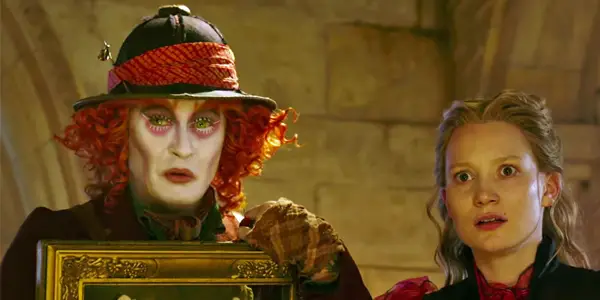
Director James Bobin, who had previously directed the wonderful Muppets reboot and its underrated sequel Muppets: Most Wanted, has created a prequel/sequel to Tim Burton’s Alice in Wonderland (a film I really disliked). My faith in Bobin’s ability to take the madcap fun displayed in the Muppets films and apply them to the dreary characters established in Burton’s film made me curious enough to watch this new sequel, a prediction that is mostly fulfilled in this amusing yet ultimately vacant time-travel adventure.
That Pesky Plot
Alice Through the Looking Glass takes place roughly 5 years after the first film, where the titular Alice Kingsleigh (Mia Wasikowska) is now an established sailor working for Hamish Ascot (Leo Bill), her would-be fiancé that Alice publicly turned down in a humiliating fashion. Due to his burning resentment, Hamish strips Alice of her new job, trying to force her to become a desk clerk, and threatens to destroy her late father’s beloved ship. This frustration drives Alice to run away, leading her to find a mystifying mirror which transports her back to Underland.
As Alice meets up with her old friends, including the White Queen (Anne Hathaway), Tweedledee and Tweedledum (Matt Lucas) and more, they all show concern about the Mad Hatter’s (Johnny Depp) sudden bout of depression. Alice discovers that Mad Hatter has found a souvenir of his late family, a group of ‘hatters’ who were seemingly killed by the Jabberwocky years ago. This new souvenir has Mad Hatter thinking his family is still alive somewhere, but when Alice doesn’t believe him, the lack of faith puts Hatter down a dark path that physically starts to cripple him to the point of death.
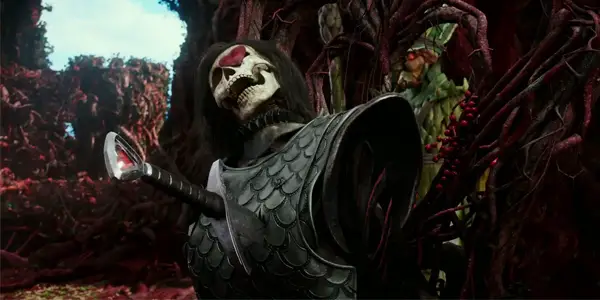
In order to save Hatter, Alice is forced to go back in time and find out what happened to Hatter’s family. This can only be achieved by confronting ‘Time’ (an entertaining Sacha Baron Cohen), a half-human half-robotic personification of Time itself who oversees the Grand Clock that controls all of Underland. Alice must steal the ‘Chronosphere’, a time travel machine that is desired by the Red Queen (Helena Bonham Carter), which once taken from Time’s possession, starts to put the fate of all Underland at the brink of collapse.
Child-Safe Time Travel
Sound a bit complicated? Much like the second Austin Powers, this is one film which throws away the convoluted rules of time travel and treats the concept in a linear and straightforward fashion, ignoring any loopholes and paradoxical errors which exist in all time travel fiction. The main problem with Alice Through the Looking Glass’ narrative is that it’s filled with so many different subplots that the film fills unnecessarily overstuffed, similar to Disney’s latest hit Captain America: Civil War, but squeezed into 2 hours rather than Civil War’s almost 3-hour runtime.
The overarching storyline is quite lowkey – Alice must find out the fate of Mad Hatter’s family in order to cheer him up, which starts off refreshing in its more personal approach. But as the film starts to shift into a plot about the Red Queen wanting to once again take over Underland, the plot starts to fall into very predictable territory. Much like most mainstream action films nowadays, Alice Through the Looking Glass feels like it is finishing five different times, a victim of its many subplots constantly ticking by.
Refusing to Let it Go
The effects of the juggernaut hit Frozen echo quite loudly throughout Through the Looking Glass, with the crux of its plot being built upon the eradicated relationship between the sisters Red Queen and The White Queen. A childhood accident leads to the sisters splitting up and becoming enemies in adult life – sound familiar? Whilst a bulk of the film’s story is based upon their relationship, their interactions still feel forced, only to replicate the success of Frozen’s sisterhood ideals and to give the stars, Helena Bonham Carter and Anne Hathaway, something to do in the film.
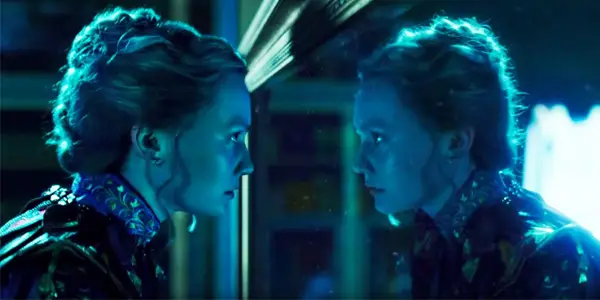
Johnny Depp is much more toned down than the previous movie, playing a more reflective and conflicted character, which highlights the shift in direction from Burton’s loose creative style to Bobin’s more controlled and interesting take on the character. Mia Wasikowski plays her leading part perfectly fine, but due to playing the essential straight man to the film’s crazy characters, she isn’t given a great deal of compelling material to work with.
The most commanding and memorable element of the film is the boisterous performance by Sacha Baron Cohen, a proven gifted comedian whose ‘Time’ character has many shades of his previous humorist avatars. He injects his character with a sense of dominance but with a side of sympathy that never makes him a generic villain, but rather a man trying to make sure that Alice doesn’t cause a paradox-incited apocalypse.
Sweet and Sour Visuals
Whilst Jon Favreau’s Jungle Book transported us to the jungles of India via its incredibly impressive CGI, Through the Looking Glass’ computer generated trickery feels cheap and intrusive, one of the elements that reminded me of why I disliked the first film so much. The opening scene, an incredibly out-of-place sea battle (which for Disney, swings way too close to their Pirates of the Caribbean franchise), immediately grabs the audience aesthetically, a boastful CGI-fest which is an attempt to immediately command attention and initially confuse viewers via the setting.
It doesn’t work because the visuals have quite an unsatisfying and low-cost feeling towards them, reminding us that we’re simply witnessing the work of thousands of computer-generated trickery rather than feeling like we’re being transported into the rain-soaked boat alongside our hero.
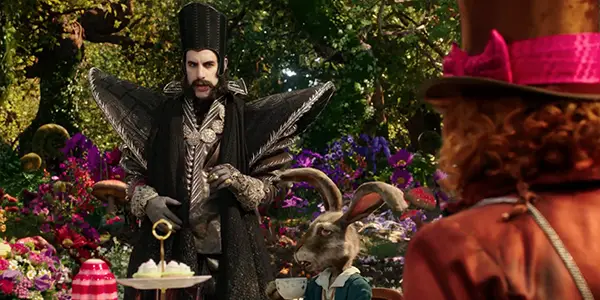
Whilst the film weaves some interesting visuals throughout, its quite aesthetically and energetically toned down compared to Burton’s film, which should be a refreshing change, but there’s nothing that quite stands out, especially when trying to recount a singular outstanding image for this review. This lack of memorable audio/visual elements bleeds into the film’s soundtrack, another forgettable score which highlights the emotional resonance of each scene in a predictable manner.
The Verdict
Alice Through the Looking Glass is a film which ends up feeling just as unnecessary as you expect it to be. Whilst Bobin has some fun with the material, it’s a sequel which gives further depth and backgrounds to characters that we never cared about in the first place. The childhood adventures of a young Red Queen and the humble beginnings of the Mad Hatter were character explorations that I feel didn’t need a whole film to deliver, and once we’re given those backstories, it still feels quite redundant.
Not only are the real world elements incredibly rushed, but so are all the subplots in the film. Trying to give depth to each of the main characters (Mad Hatter, Red Queen, White Queen, Alice, Time) whilst trying to tell a multi-layered time travel story makes the film’s narrative extremely convoluted for a children’s film. It’s not hard to follow, but it’s so eclectic and all over the place that each story doesn’t get enough time (pun not intended) to make you care about them, which makes the film feel like a CGI-laden candy coloured portmanteau film with the Alice in Wonderland cast. Whilst Through the Looking Glass will be diverting fun for children, it’s simply not original or interesting enough to leave a lasting impact, especially when compared to the loaded line-up that Disney is delivering this year.
How do you feel about the increasing levels of unnecessary sequels coming out?
Alice Through The Looking Glass gets release in the US and UK on May 27, 2016. Find international release dates here.
Does content like this matter to you?
Become a Member and support film journalism. Unlock access to all of Film Inquiry`s great articles. Join a community of like-minded readers who are passionate about cinema - get access to our private members Network, give back to independent filmmakers, and more.



